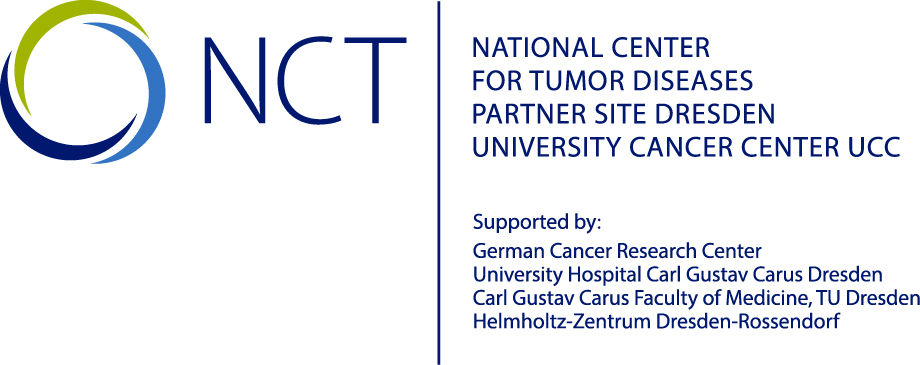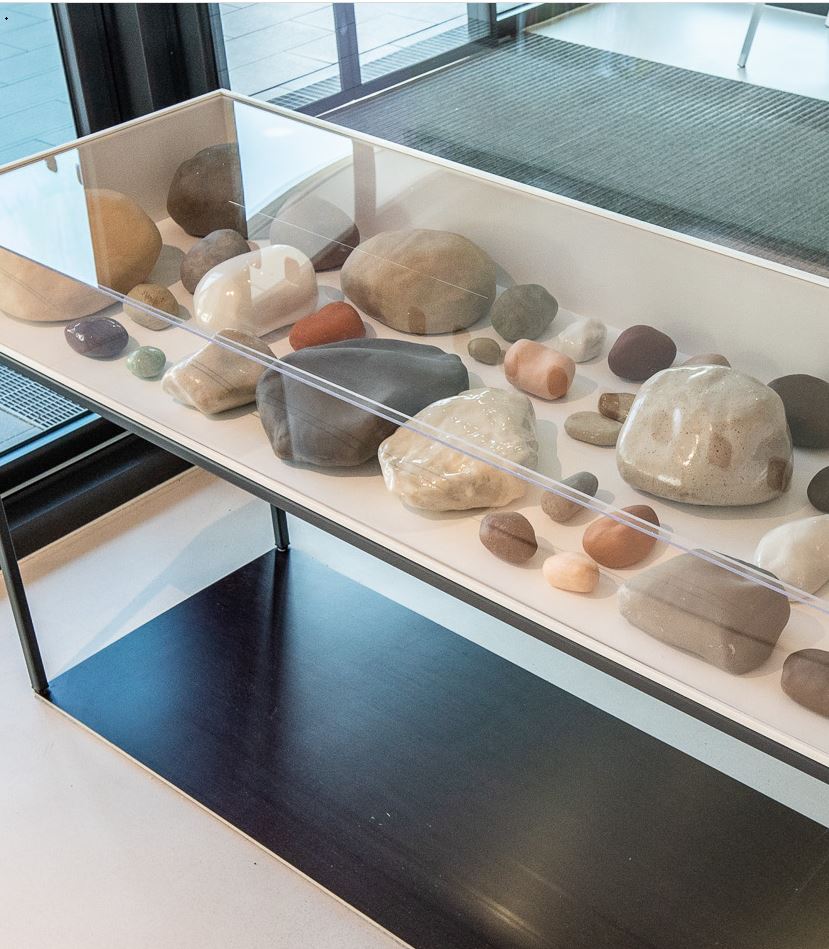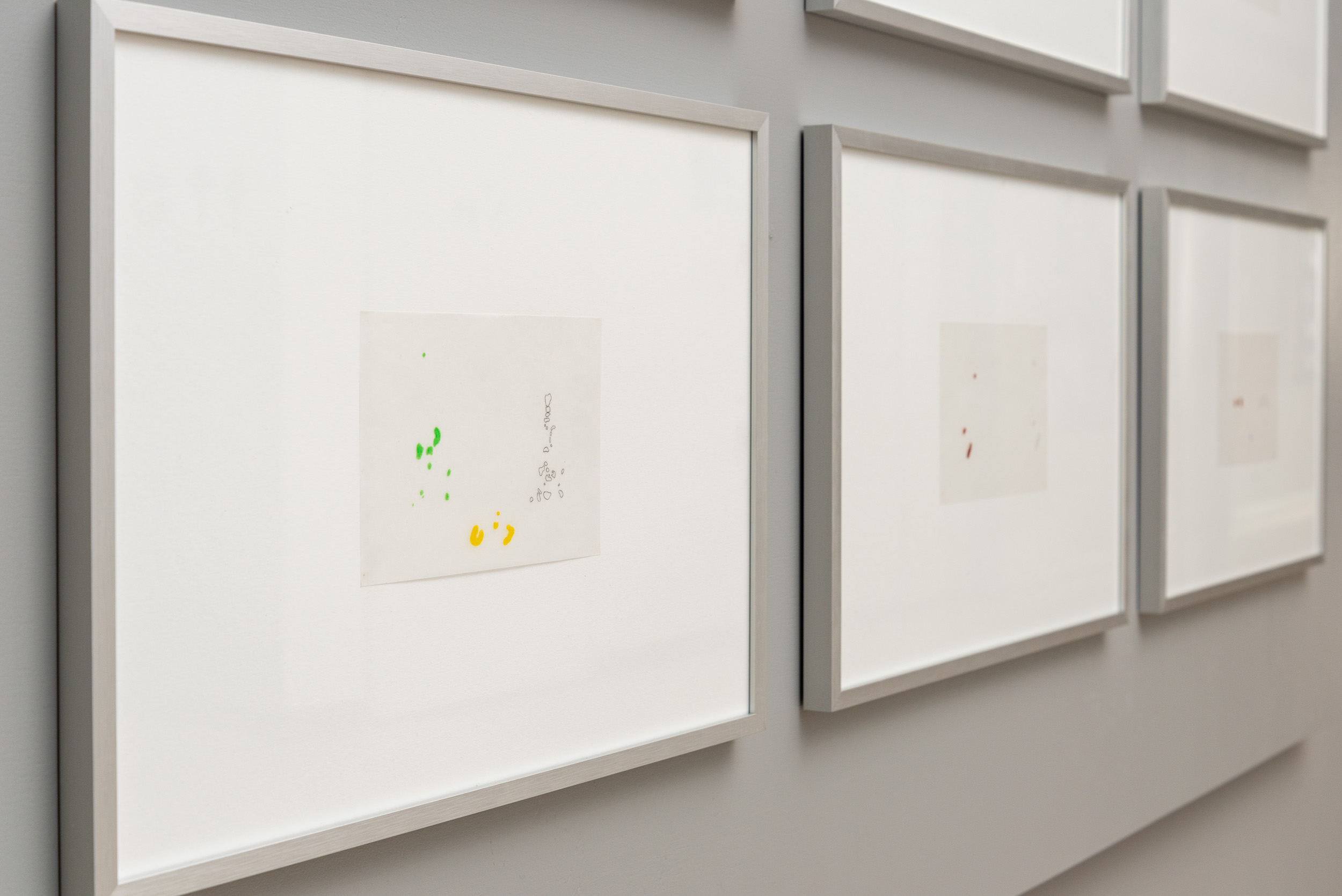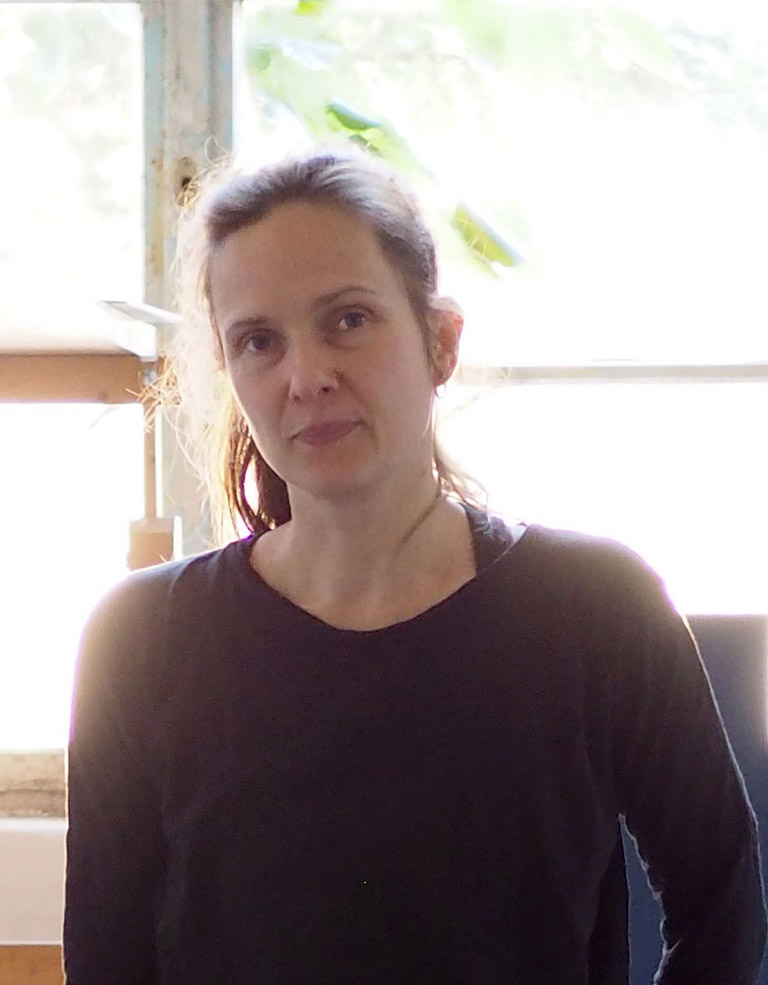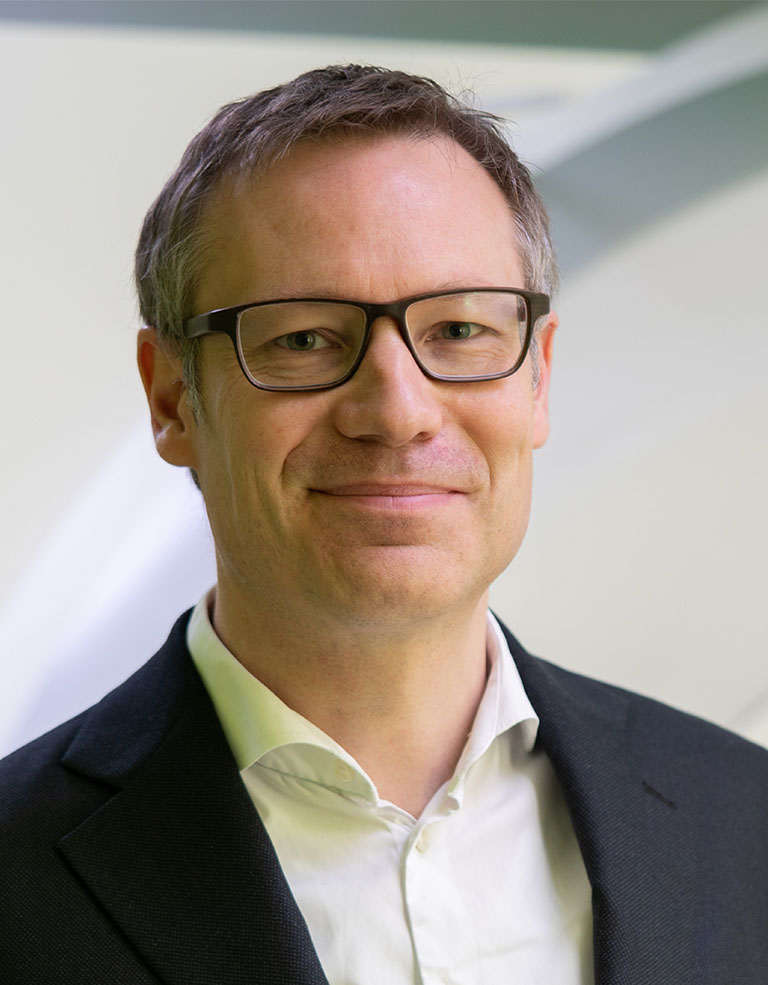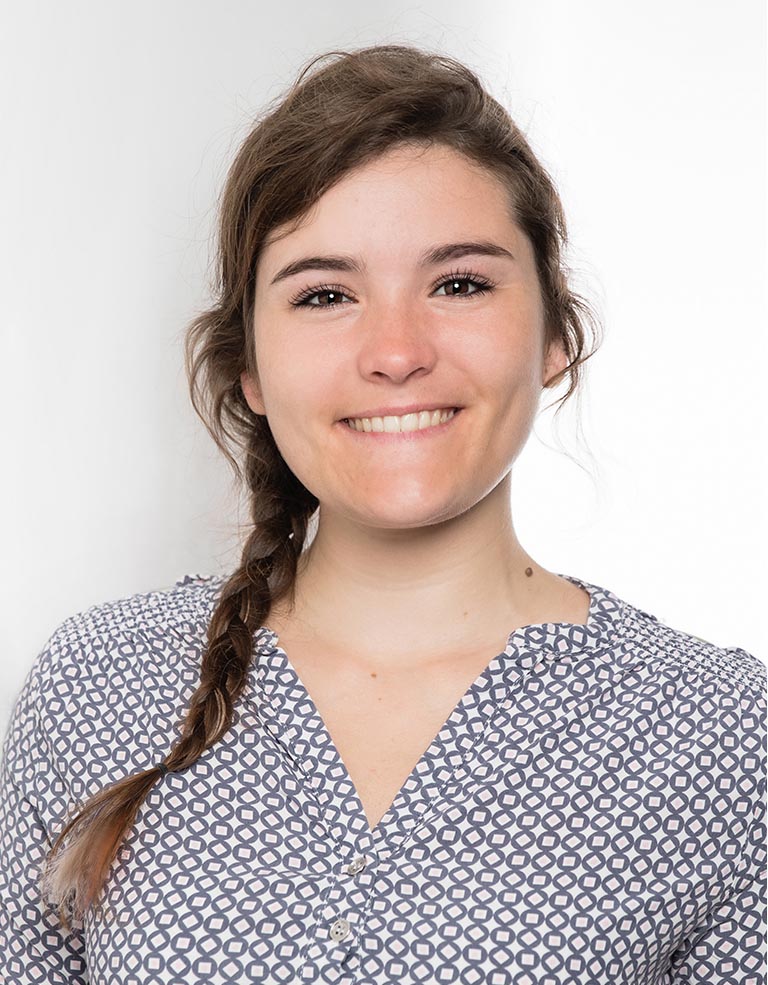Gaining knowledge in science goes hand in hand with the creation of reliable images, among other things. Gaining knowledge in art, on the other hand, must always leave out the claim of objectivity and comprehensibility. Similarly, both disciplines, science and art, encounter each other in their search for new ways of representing unknown facts, which in their specific way make things visible and allow the unknown to come to light.
Hanne Lange makes what is difficult to imagine comprehensible and gives it a form. In a long showcase, she displays a conglomerate of about 40 objects, which in their shape and size are reminiscent of stones found in nature. Modeled in clay and porcelain, they are glazed and shiny after firing, or unglazed and matt.

